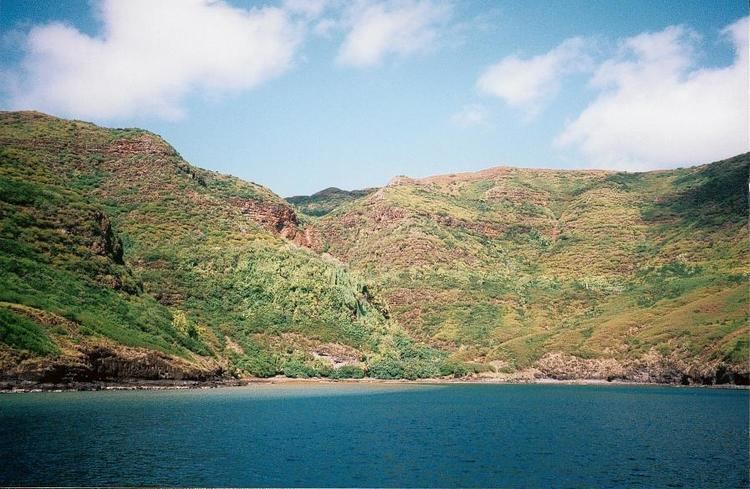Highest elevation 576 m (1,890 ft) Population 0 (2002) Elevation 576 m | Pop. density 0 /km (0 /sq mi) Area 43.8 km² | |
 | ||
Eiao is the largest of the extreme northwestern Marquesas Islands. The island was discovered in 1791 by the American sea captain Joseph Ingraham, who named it Knox Island in honour of the U.S. Secretary of War at that time, Henry Knox. Other names given to this island by Western explorers include Masse, Fremantle, and Robert.
Map of ''Eiao, French Polynesia'
"Eiao" is administratively part of the commune (municipality) of Nuku-Hiva, itself in the administrative subdivision of the Marquesas Islands.
The center of this island is a high plateau, rising on the east side to 576 metres above sea level (1,890 feet), much of which has been devastated by herds of feral sheep brought here by mankind. There is one good anchorage, found on the western side of the island at Vaituha.
In the late 19th century, the island was briefly used as a leper colony island, although that enterprise was eventually abandoned because of the frequent droughts, and the difficulty of reliably landing supplies on the island. In the 1970s, the island was the site of extensive French military activity, while it was being explored as a possible site for nuclear weapons testing. This island and its surrounding rocks were declared the Eiao Island Nature Reserve in 1992, as a first step toward protecting its ecosystem — including a number of endangered species, some of which are endemic. Before the creation of the reserve, the Eiao monarch, a bird in the order passeriformes, became extinct.
In pre-European times, the bodies of chiefs from parts of Te I'i were taken to Eiao for burial.
Eiao was at one time home to a Marquesan tribe called the Tuametaki.
Stone tools, especially adzes, made from basalt have been found in archaeological sites on other islands, providing evidence for prehistoric interisland voyaging within this island group.
